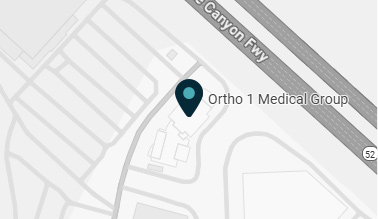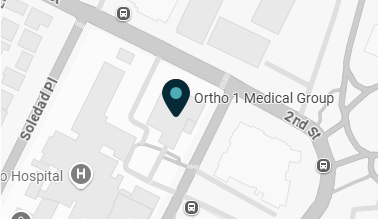Struggling with stiffness or straightening one of your fingers? Do your fingers pop, snap, or click when you try to bend or straighten them? You might have a common condition called trigger finger.
The good news is that trigger finger is a treatable condition. At Ortho 1 Medical Group in Chula Vista and La Jolla, California, our providers specialize in diagnosing and treating conditions that affect your hands and fingers — including trigger finger.
While the phrase “trigger finger” may make most of us think of old Westerns or gun ranges, this painful condition gets its name from the sounds your fingers make when you have it. And it can cause pain and irritation that affect your quality of life.
Officially called stenosing tenosynovitis, trigger finger causes your affected digit to snap, click, or pop painfully when you try to move it. You develop trigger finger when the sheath that surrounds the tendons in your finger gets inflamed.
These sheaths protect the tendons and have a pulley that helps the tendon move so you can move your fingers smoothly. The inflammation of trigger finger creates scar tissue, which makes it hard for the tendons to slide cleanly.
As a result, the tendon can catch on the pulley. When this happens, it’s even harder for the tendon to move and your finger can get stuck in a bent position or have trouble going from straight to bent.
If you’re wondering whether the stiffness in your finger could be trigger finger, keep reading to learn more about this condition and the ways we help fix it.
How can I tell if I have trigger finger?
If you’re experiencing pain, stiffness, or tenderness when you try to move your fingers, it’s important to seek an expert diagnosis. That’s because other conditions may have similar symptoms.
To help you understand if you have trigger finger, here’s a look at some of the most common signs of this condition:
- Hearing or feeling a popping or clicking as you straighten or bend the finger
- Having stiffness in your fingers, especially first thing in the morning
- Having a small bump or discomfort at the base of the inside of the finger
- Having a finger that stays bent but suddenly pops up sometimes
- Not being able to straighten the affected finger
You should know that trigger finger can develop in any finger — including your thumbs. If you’re experiencing any of these signs, schedule an appointment with a specialist at Ortho 1 Medical Group.
What puts me at risk of developing trigger finger?
It’s possible for anyone to develop trigger finger. However, certain factors increase your risk of getting this condition, including:
- Being female
- Having certain medical conditions (e.g., diabetes; rheumatoid arthritis)
- Being between 40 and 60 years old
- Having a hobby or profession that requires repetitive movement of your fingers and/or thumbs (e.g., musicians; assembly line workers; writers)
- Engaging in activities that require forceful use of your fingers or repeated gripping
You also have a higher risk of developing trigger finger if you’ve had surgery for carpal tunnel syndrome.
What treatments help trigger finger?
At Ortho 1 Medical Group, our providers use an individualized approach to managing and treating trigger finger. We usually begin with the most conservative therapies first, including options such as:
- Physical therapy
- Corticosteroid injections
- Nonsteroidal anti-inflammatory drugs (NSAIDs)
- Wearing a splint or brace
If these therapies don’t work, or if your finger is stuck in a bent position, your provider may recommend tenolysis, or trigger finger release surgery.
During this minimally invasive surgery, your provider makes a small incision or uses the tip of a needle to divide the pulley that’s blocking the tendon so you can move your finger.
To learn more about trigger finger and how we can help, schedule an appointment over the phone or online at Ortho 1 Medical Group in Southern California.





















